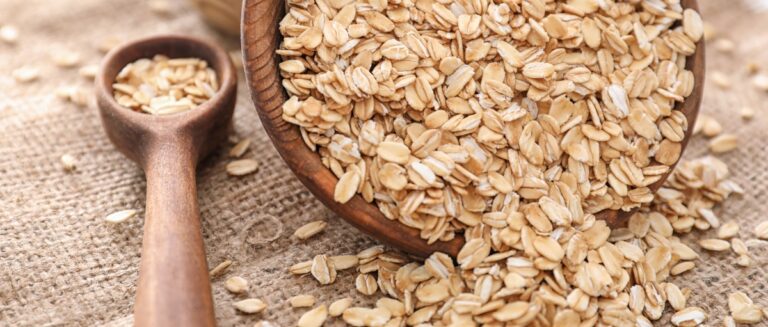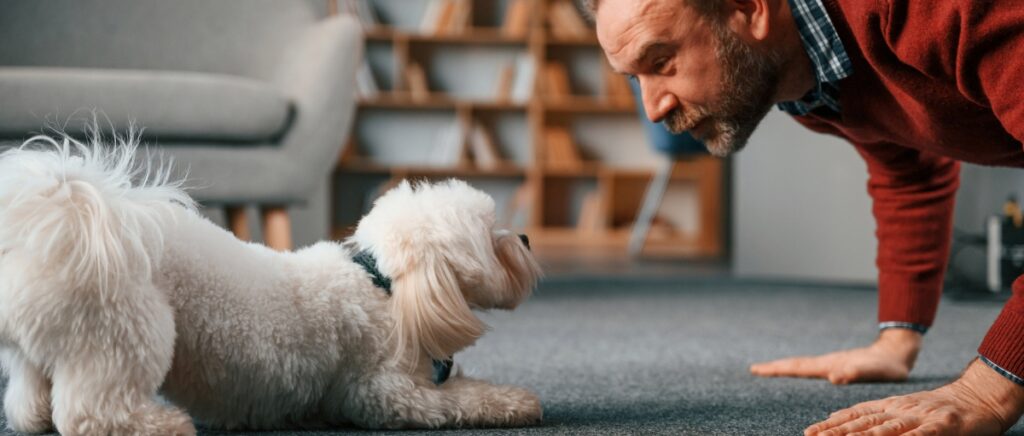About a quarter of baby boomers own a pet, and dogs are among the most popular choices. But when it comes to finding the perfect indoor dog, choosing a breed that fits your lifestyle and needs is essential.
Dogs get as many as 14 hours of sleep each day, meaning that much of their time is spent indoors, especially in elder homes. That’s why selecting a breed that thrives indoors is crucial for you and your canine companion.
In this article, we’ll explore the benefits of having an indoor dog, the characteristics to look for in a good indoor breed, and the popular dog breeds for baby boomers.
From loving small lap dogs such as the Maltese and Bichon Frise to versatile medium-sized breeds like the French Bulldog and Pug, we’ll explore a variety of options to help you discover your perfect companion. Additionally, we will delve into each breed’s specific needs, addressing grooming requirements and potential health concerns, ensuring you are well-equipped with the knowledge needed before making your decision.
So, whether you’re downsizing to a cozy apartment or simply looking for a loyal companion to share your home with, keep reading to discover the best indoor dog breeds for baby boomers.
The Benefits of Having an Indoor Dog for Seniors
Welcoming a canine companion into your home can bring joy, laughter, and unconditional love to your life. For baby boomers, the benefits of having an indoor dog extend far beyond the simple pleasures of playtime and snuggles. Indoor dogs offer a range of advantages that can significantly improve your quality of life.
One of the most significant benefits of having an indoor dog is the companionship and emotional support they provide.
Loneliness and isolation can become more prevalent as we age, but a loyal canine friend can help alleviate these emotions. The bond between a dog and their owner is powerful, offering comfort, security, and a sense of purpose.
Studies have shown that dog ownership can have numerous positive effects on mental health, including:
- Reducing symptoms of depression and anxiety.
- Providing a sense of structure and routine.
- Promoting social interaction and reducing feelings of isolation.
But the benefits continue beyond there.
Having an indoor dog can also positively impact your physical health. Regular walks and playtime with your furry friend can keep you active and encourage a more consistent exercise routine. This, in turn, can lead to better cardiovascular health, improved mobility, and a reduced risk of certain age-related conditions.
Moreover, research has demonstrated that interacting with dogs can have measurable physiological effects, such as:
- Lowering blood pressure and reducing stress levels.
- Releasing feel-good hormones like oxytocin and serotonin.
- Boosting the immune system and reducing inflammation.
By welcoming an indoor dog into your life, you’re gaining a loyal companion and taking a proactive step toward improving your overall well-being. In the next section, we’ll explore the key characteristics to look for when choosing the perfect indoor dog breed for your lifestyle and needs.
What is the Best House Dog?
While there’s no single “best” house dog that’s perfect for everyone, some breeds that are generally considered good house dogs include:
- Labrador Retrievers: Friendly, gentle, good with kids.
- Poodles: Intelligent, low-shedding, come in different sizes.
- Pugs: Affectionate, low-energy, don’t need much exercise.
- Cavalier King Charles Spaniels: Sweet-tempered, good for apartments.
- Greyhounds: Calm, quiet, adaptable to apartment living despite their size.
The best family dog ultimately depends on your living situation, lifestyle, and preferences. Consider factors like:
- Size of your home.
- How much exercise you can provide.
- Shedding and grooming needs.
- Energy level.
- Temperament with grandchildren or other pets.
- Barking tendencies.
Research different breeds and speak to a veterinarian or reputable breeder to find the best match for your household. Adopting an adult dog from a shelter can also be a great option, as their personalities are already developed.
Characteristics of Good Indoor Dog Breeds
When looking for the best inside dogs, it’s important to focus on specific traits that suit a breed for indoor life. Although each dog has its own unique personality, certain characteristics can greatly enhance the experience of living together and foster a harmonious relationship between you and your furry companion.
Low Energy Levels
One of the most important factors to consider when choosing an indoor dog is their energy level. Breeds with lower energy requirements are often better suited to indoor living, as they are content with shorter walks and indoor play sessions.
This is particularly important for baby boomers with limited mobility or living in smaller spaces, such as apartments or condos.
Easy Trainability
A crucial trait of the best inside dogs is their trainability—breeds that are eager to please and quick to master new commands tend to integrate more smoothly into the household.
This is crucial for maintaining a well-behaved and obedient dog, especially in close living quarters where good manners are essential.
Light Grooming Needs
Choosing an indoor dog involves considering its grooming needs. Breeds with minimal shedding and low-maintenance coats are usually favored for indoor environments, as they require less frequent grooming and contribute to a tidier home. Ideally, look for breeds that don’t shed, making them an even better fit for your living space.
This can benefit boomers with limited time or energy for extensive grooming routines.
Affectionate Nature
Finally, a good indoor dog should have an affectionate and friendly disposition. Breeds known for their loving and loyal nature make wonderful companions, providing comfort, support, and unconditional love to their owners.
This is especially important for baby boomers seeking a close bond with their canine friends.
9 Best Indoor Dog Breeds for Baby Boomers
Now that we’ve explored the key characteristics of a good indoor dog, let’s look at some of the best breeds for baby boomers. These breeds have been selected based on their adaptability to indoor living, friendly temperaments, and manageable grooming needs.
Small Breeds
- Maltese: Gentle, affectionate, and adaptable, the Maltese is a perfect lap dog for baby boomers. They require minimal exercise and are content with indoor play, making them well-suited to apartment living. However, their long, silky coats do require regular grooming to prevent matting.
- Bichon Frise: A playful and friendly hypoallergenic dog, the Bichon Frise is a great choice for baby boomers with allergies. They are easy to train and adapt well to various living situations, making them ideal for houses and apartments. Their fluffy coat requires moderate grooming to maintain its appearance.
- Chihuahua: Compact, loyal, and protective, the Chihuahua is a devoted companion for baby boomers. They require minimal exercise and grooming, making them low-maintenance pets. However, they can be vocal and may need socialization to prevent aggressive behavior towards strangers.
Medium Breed
- French Bulldog: Charming, affectionate, and adaptable, the French Bulldog is a popular choice for indoor living. They need little exercise and minimal grooming, making them easy to care for. However, their flat faces can lead to respiratory issues, so monitoring their health closely is essential.
- Cavalier King Charles Spaniel: Gentle, affectionate, and eager to please, the Cavalier King Charles Spaniel is a loving companion for baby boomers. They adapt well to various living situations and have moderate exercise needs, making them suitable for both houses and apartments. Their silky coat requires regular grooming to maintain its appearance.
- Pug: Playful, mischievous, and adaptable, the Pug is a popular choice for indoor living. They need little exercise and minimal grooming, making them low-maintenance pets. However, like French Bulldogs, their flat faces can lead to respiratory issues, so monitoring their health closely is important.
Large Breeds
- Greyhound: Calm, gentle, and adaptable, the Greyhound is a surprising choice for indoor living despite its size. They need little exercise and are content with daily walks, making them suitable for apartment living. Their short, smooth coat requires minimal grooming, making them low-maintenance pets.
- Bullmastiff: Loyal, protective, and calm, the Bullmastiff is a gentle giant that adapts well to indoor living. They have moderate exercise needs and are content with daily walks and indoor play. Their short, dense coat requires minimal grooming, making them low-maintenance pets. However, their large size means they may be better suited to homes with ample space.
- Great Dane: Friendly, patient, and adaptable, the Great Dane is a loving companion for baby boomers. Despite their size, they have moderate exercise needs and are content with daily walks and indoor play. Their short, smooth coat requires minimal grooming, making them low-maintenance pets. Like Bullmastiffs, their large size means they may be better suited to homes with ample space.
Finding Your Perfect Indoor Companion
Choosing the right indoor dog breed is a personal decision that depends on your lifestyle, preferences, and living situation. By considering the key characteristics of a good indoor dog and exploring the best breeds for baby boomers, you can find the perfect companion to share your golden years with.
Adopting a dog is a long-term commitment that requires time, effort, and financial resources. Before bringing a new furry friend into your home, research the specific needs of your chosen breed and prepare your living space accordingly.
If you’re ready to welcome a loyal, loving, and adaptable companion, consider adopting one of the best indoor dog breeds for baby boomers. You’ll enjoy years of unconditional love, laughter, and companionship with the right match.
For more information on adopting a dog and finding reputable breeders or rescue organizations, visit the American Kennel Club’s website or consult your local animal shelter.
Sources
Forbes. (2023). Pet ownership statistics. Retrieved from https://www.forbes.com/advisor/pet-insurance/pet-ownership-statistics/
Pet Food Industry. (2021). Pet food marketing: Why baby boomers are worth a closer look. Retrieved from https://www.petfoodindustry.com/pet-food-market/article/15459634/petfood-marketing-why-baby-boomers-are-worth-a-closer-look
Saatva. (2023). How many hours do dogs sleep? Retrieved from https://www.saatva.com/blog/how-many-hours-do-dogs-sleep/
NCBI. (2021). The relationship between dog ownership and physical activity. Retrieved from https://www.ncbi.nlm.nih.gov/pmc/articles/PMC10262044/
Harvard Health. (2021). Having a dog can help your heart—literally. Retrieved from https://www.health.harvard.edu/staying-healthy/having-a-dog-can-help-your-heart–literally
Harvard Health. (2021). The heartfelt benefits of pet ownership. Retrieved from https://www.health.harvard.edu/heart-health/the-heartfelt-benefits-of-pet-ownership
Hello Heart. (2022). Dogs: Bonding hormone reduces blood pressure. Retrieved from https://www.helloheart.com/post/dogs-bonding-hormone-reduces-blood-pressure











